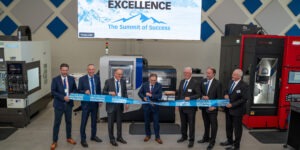Top Three ERP Trends for Small to Medium-Sized Job Shops
Enterprise Resource Planning systems help job shops overcome challenges with hiring and supply chain by tracking job costs in real time.
Posted: June 16, 2022
Times are tough for the manufacturing industry. The worldwide supply chain disruption continues to impact manufacturers around the globe. Raw materials can be hard to get and their costs are climbing at an alarming rate. Most shops are having a hard time hiring enough qualified employees to staff their needs.
These challenges especially impact small to medium-sized job shops because they have less margin for error than larger companies. Fortunately, enterprise resource planning (ERP) systems offer a variety of features and functionalities to help address these issues. The following are currently trending strongly throughout the industry.
- Real-Time Job Costing
With profit margins growing tighter during the uncertain global economy, the ability to track job costs in real time has become more important than ever. ERP systems that offer the following costing capabilities enable in-the-moment decisions based on live rather than outdated information.
- Visibility into job costs during and after production. With the constant fluctuations in material costs and availability, job quotes that are typically valid for months may need to change in a few weeks or even days. Having one-click access to accurate job costs during and immediately after a job is finished keeps you in touch with how you are doing — estimate versus actual and what adjustments you need to make.
- Tracking cost by component. Using actual costing, it is common to see components of costs added as material cost in the finished good. Finding a system that allows you to track inventory, WIP and cost of goods sold by individual components such as freight, labor, overhead, and outside services, helps calculate total costs with greater precision. It also helps identify areas where actual costs are exceeding estimated and make adjustments when needed.
- Historical finished goods data. This information can be very useful when quoting, pricing and scheduling new jobs. Tracking detailed historical inventory and costs, including old quantities, current transactions, new quantities and the cost for each, helps analyze long-term costing trends for more accurate projections of your schedule.
- Forecasting
The difficulty in obtaining raw materials and sufficient labor has also elevated the importance of forecasting. With unpredictable material lead times, manufacturers everywhere are struggling to hit delivery dates. Using ERP to forecast your ability to meet requested due dates can help predict backlogs and maintain good relationships with customers.
Suppose you have a three-month backlog on jobs. Loading a sales forecast into the ERP system will identify the amount of materials needed to produce the parts and the labor required to make them. This allows you to estimate the work you think will happen and plan a realistic schedule based on expected material and labor requirements.
Forecasting may also indicate the need for you to find another vendor to meet your customer due date and quantity requirements. No shop wants to give work away, but if you do not have the machine capacity or cannot find the material, it is much better for both of you to know that before it is too late.
- KPI Dashboards
Key performance indicators (KPIs) have been around forever. What manufacturers are looking for these days is quicker ways to access and analyze the information. ERP vendors are responding by creating more robust, highly customizable KPI dashboards that provide instant access to high-level summary data. These typically address standard KPIs from accounts payable and receivable, to sales, employee and work center productivity, quality and much more.
The best KPI dashboards let you organize data the way you want to see it. For example, combining labor measurement and workforce performance data into one screen to manage labor costs more effectively. You can also filter the data to access only what needs your attention and easily export the data to Excel. Some ERP systems even let you build your own custom dashboards.
A related trend is the growing use of internet-enabled TV screens to display a variety of dashboard information throughout the shop floor. These tools improve efficiency by providing real-time data such as up-to-date dispatch lists, the status of jobs in process, and hot jobs that need immediate attention. Shop floor personnel know what they should be working on now and what is coming up next without leaving their workstations.
Real-Time Decision Making
The key factor in each of these trends is ERP’s ability to provide access to data in real time and organize and display it the way you need to see it. In doing so ERP turns raw data into actionable information to make evidence-based decisions that benefit your business and your customers.
Subscribe to learn the latest in manufacturing.















